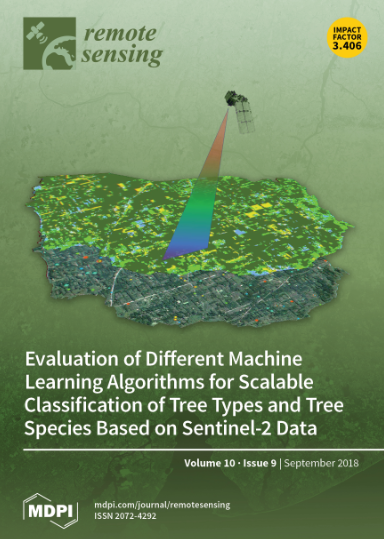Denoising of Photon-Counting LiDAR Bathymetry Based on Adaptive Variable OPTICS Model and Its Accuracy Assessment
IF 4.2
2区 地球科学
Q2 ENVIRONMENTAL SCIENCES
引用次数: 0
Abstract
Spaceborne photon-counting LiDAR holds significant potential for shallow-water bathymetry. However, the received photon data often contain substantial noise, complicating the extraction of elevation information. Currently, a denoising algorithm named ordering points to identify the clustering structure (OPTICS) draws people’s attention because of its strong performance under high background noise. However, this algorithm’s fixed input variables can lead to inaccurate photon distribution parameters in areas near the water bottom, which results in inadequate denoising in these areas, affecting bathymetric accuracy. To address this issue, an Adaptive Variable OPTICS (AV-OPTICS) model is proposed in this paper. Unlike the traditional OPTICS model with fixed input variables, the proposed model dynamically adjusts input variables based on point cloud distribution. This adjustment ensures accurate measurement of photon distribution parameters near the water bottom, thereby enhancing denoising effects in these areas and improving bathymetric accuracy. The findings indicate that, compared to traditional OPTICS methods, AV-OPTICS achieves higher -values and lower cohesions, demonstrating better denoising performance near the water bottom. Furthermore, this method achieves an average of 0.28 m and of 0.31 m, indicating better bathymetric accuracy than traditional OPTICS methods. This study provides a promising solution for shallow-water bathymetry based on photon-counting LiDAR data.基于自适应可变 OPTICS 模型的光子计数激光雷达水深测量去噪及其精度评估
空间光子计数激光雷达在浅水测深方面具有巨大潜力。然而,接收到的光子数据往往含有大量噪声,使海拔信息的提取变得复杂。目前,一种名为 "排序点识别聚类结构(OPTICS)"的去噪算法因其在高背景噪声下的强大性能而备受关注。然而,该算法的固定输入变量会导致靠近水底区域的光子分布参数不准确,从而导致这些区域的去噪不充分,影响测深精度。为解决这一问题,本文提出了自适应变量 OPTICS(AV-OPTICS)模型。与输入变量固定的传统 OPTICS 模型不同,本文提出的模型可根据点云分布动态调整输入变量。这种调整可确保精确测量水底附近的光子分布参数,从而增强这些区域的去噪效果,提高测深精度。研究结果表明,与传统的 OPTICS 方法相比,AV-OPTICS 可获得更高的 - 值和更低的内聚值,在水底附近表现出更好的去噪性能。此外,与传统 OPTICS 方法相比,AV-OPTICS 方法实现了平均 0.28 米和 0.31 米的水深测量精度。这项研究为基于光子计数激光雷达数据的浅水测深提供了一种前景广阔的解决方案。
本文章由计算机程序翻译,如有差异,请以英文原文为准。
求助全文
约1分钟内获得全文
求助全文
来源期刊

Remote Sensing
REMOTE SENSING-
CiteScore
8.30
自引率
24.00%
发文量
5435
审稿时长
20.66 days
期刊介绍:
Remote Sensing (ISSN 2072-4292) publishes regular research papers, reviews, letters and communications covering all aspects of the remote sensing process, from instrument design and signal processing to the retrieval of geophysical parameters and their application in geosciences. Our aim is to encourage scientists to publish experimental, theoretical and computational results in as much detail as possible so that results can be easily reproduced. There is no restriction on the length of the papers. The full experimental details must be provided so that the results can be reproduced.
 求助内容:
求助内容: 应助结果提醒方式:
应助结果提醒方式:


